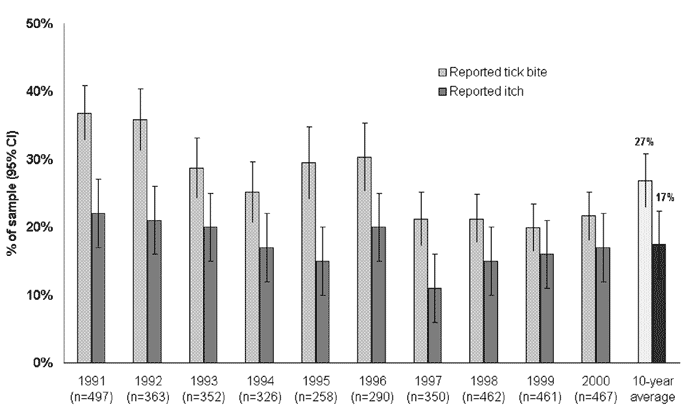Volume 11, Number 1—January 2005
Research
Hypersensitivity to Ticks and Lyme Disease Risk
Figure 1

Figure 1. . Reported tick bite and itch by serosurvey year on Block Island, Rhode Island, 1991–2000.
1Harvard University: Richard Pollack, Steven Tahan; Connecticut Children's Medical Center: Patricio Tomas, Diane Christianson; University of Connecticut School of Medicine: T.V. Rajan, Raymond Ryan, Feliciano Dias, Pamela Fall, Tracey Urso, Christine Abreu, Jonathan Covault; Block Island Medical Center: Peter Baute, Linda Closter, Janice Miller.
Page created: April 25, 2012
Page updated: April 25, 2012
Page reviewed: April 25, 2012
The conclusions, findings, and opinions expressed by authors contributing to this journal do not necessarily reflect the official position of the U.S. Department of Health and Human Services, the Public Health Service, the Centers for Disease Control and Prevention, or the authors' affiliated institutions. Use of trade names is for identification only and does not imply endorsement by any of the groups named above.